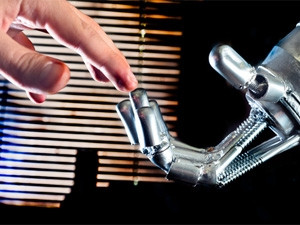
Lights that automatically turn on, crops that seem to water themselves, robots on desks, and holographic meetings are all futuristic concepts that are already starting to become reality.
Locally, the Council for Scientific and Industrial Research (CSIR) is researching how everyday gadgets can be plugged into the Internet of things to enable automated interventions, such as turning devices off if a blackout looms.
In the office, technology such as touch-based interactive surfaces, all tasks being performed by voice recognition technology, augmented reality glasses, desk-based robots, and holograms that will attend meetings will start becoming a reality in the next five years. This is according to a recent survey, done on behalf of Ricoh, by Coleman Parkes Research, which interviewed 2 200 employees in companies of various sizes in several sectors during May and June in several European countries and the Middle East.
According to the research, the most imminent of these technologies - within five years - will be touch-based interactive surfaces, all tasks being performed by voice recognition technology, augmented reality glasses, and desk-based robots. Cost is the biggest hindrance to adoption, according to respondents - at 57% - followed by security concerns (49%) and then government regulations at 37%, the survey found. Employee resistance is seen as an inhibitor by 36% of those surveyed, with consumer resistance at 27%.
Making it happen
Dr Louis Coetzee, research group leader at the CSIR's Internet of Things Research Group, explains several projects are on the go, all of which are aimed at delivering proof-of-concepts in real-world environments. One such project is the international Trescimo endeavour, which aims to link local proof-of-concept projects with international research.
Coetzee explains the group, which started at the end of 2010, is now creating fully-fledged Internet of things applications that make use of smart devices, connectivity, middleware and cloud-based applications, such as analytics. He says the buzzword is now becoming mainstream and can be applied to several areas, including safety and security, and the environment.
As an example, he says using the Internet of things in the energy sector will allow for better decision-making based on data gathered from households or buildings, which could be used to avoid high energy use as individual appliances can be controlled instead of entire homes.
Live, work, play
Currently under way is Trescimo - Testbeds for Reliable Smart City Machine-to-Machine Communication - which is supported by the Department of Science and Technology, as well the European Union's Seventh Programme for research, technological development and demonstration, and includes partners such as Eskom, the University of Cape Town, and Technical University Berlin and Fraunhover Fokus in Berlin, says Coetzee.
The research involves low-power (in size and connectivity) devices based on technologies from STMicroelectronics, as well as smarter and more powerful devices such as the Raspberry PI, while customised software acts as the "glue" between these devices and connectivity networks, such as cellular networks, says Coetzee. The research also looks at issues such as interoperability and security, he notes.
Coetzee believes this is the first time a test of this nature, scale and interoperability is being run in SA, although he points out that Europe already has smart cities based on a similar use of technology. He notes the team wants the proof-of-concept to be as large as possible as this will provide a demonstration that impacts several different stakeholders ? such as cities, utilities and consumers ? as it aims to influence decision-makers by showing benefits, such as cost savings and greener environmental impact, as well as improving citizens' quality of life.
Transformers
World Wide Worx MD Arthur Goldstuck says the world is at the dawn of an automated, robotic future; evidenced by cars that automatically turn headlights on when sensors determine the natural, available light is insufficient. This will become increasingly common and the next generation will live in a world where they will be startled if they have to actually turn on a light, he notes.
Goldstuck says it makes sense to move to an Internet of things era when it comes to utilities, such as water and power - a shift that will eventually strip out the need for customer intervention. He notes the City of Johannesburg is already moving this way, through smart meters, and this will eventually grow to sensors that control several aspects of home and work life.
Technologies, such as voice recognition, that are already in limited use today will be far more widespread in five years' time, says Goldstuck. However, he notes there are obstacles that will have to be overcome first, such as people's unwillingness to adopt and trust the technology. Advances must be met with social approval otherwise they will be discarded, like Google Glass.
Human inconvenience will be eliminated, and productivity and efficiency gains will be enormous; although these aspects will come at the cost of jobs, says Goldstuck. He adds people are often happy to trade off privacy when it comes to technology that makes their lives more convenient.
Share